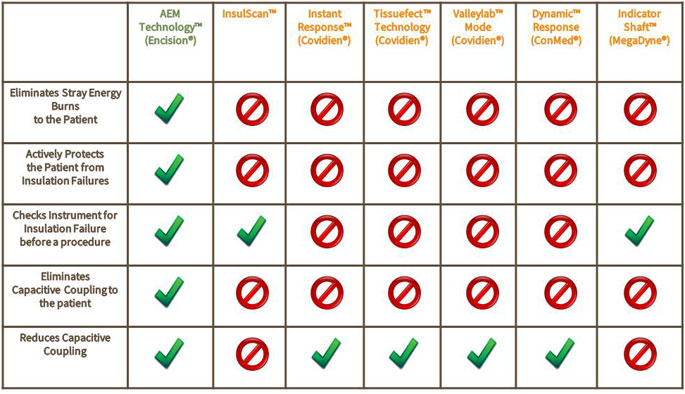Monopolar laparoscopic instruments have an inherent problem with their design; they are prone to insulation failure and capacitive coupling, causing patient burns. These stray energy burns occur in the surgeon’s blind spot. As a result, they typically go undiagnosed and further manifest into severe complications. Stray energy burns led to more than 62,000 patient complications and 4,000 preventable patient deaths over a 10 year period in the USA alone.*
In response to this inherent problem in non-AEM instruments, other medical device manufacturers have made attempts to reduce the risk of stray energy burns from monopolar energy. The intent of these technologies, to reduce preventable patient burns, is an excellent goal. Unfortunately all of these other technologies fall short and only minimally reduce the risk to the patient. Only Encision’s AEM® technology eliminates stray energy burns from monopolar electrosurgical energy in laparoscopy, we guarantee it!
Comparison of Laparoscopic Patient Safety Devices

Other electrosurgical energy forms have gained popularity in recent years. In specific instances these are a great alternative to monopolar energy. However, these technologies have limited application and significantly higher cost of instrumentation. Encision’s AEM monopolar instruments offer a safe, effective, economical solution.
Contact Us to Schedule a Free Clinical Evaluation.
*Source: Non-AEM Monopolar Laparoscopic Instruments: Complication and Mortality Rates
